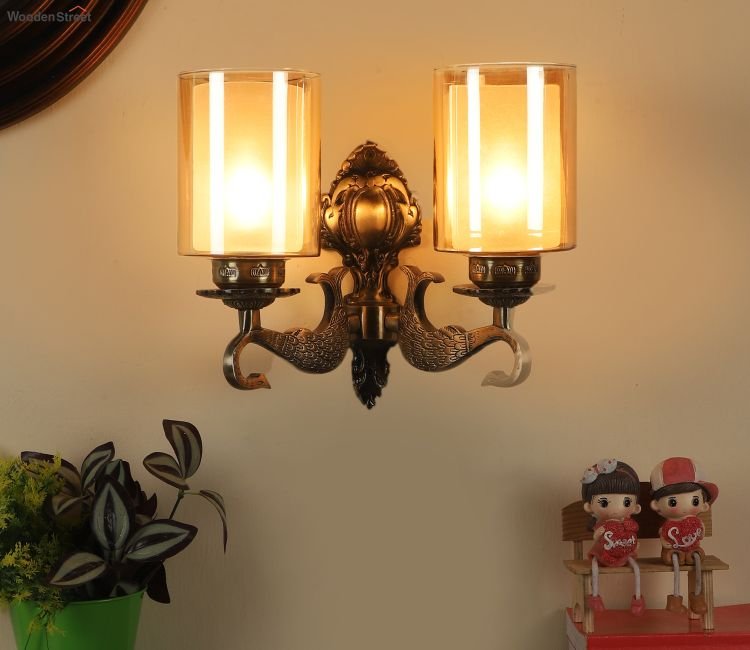Lighting plays a pivotal role in shaping the ambience and functionality of any interior space. Among various lighting options, wall lights have emerged as a stylish and practical choice for modern homes. They not only illuminate key areas but also add character, depth, and warmth to your décor. Selecting the right wall light requires balancing design, purpose, and efficiency. This guide provides a structured overview of how to choose the perfect wall light for your home — focusing on functionality, design compatibility, placement, and energy efficiency.

1. Determine the Purpose of Lighting
Before selecting any wall light, it is essential to identify its intended function. Wall lights can serve three main purposes — ambient, task, or accent lighting.
- Ambient lighting creates general illumination and sets the overall mood. Soft-glow sconces or diffused glass fixtures are ideal for hallways or living rooms.
- Task lighting provides focused brightness for specific activities like reading or grooming. Adjustable wall lamps near a bed or mirror are practical examples.
- Accent lighting highlights architectural elements, artworks, or textures, enhancing the room’s aesthetic appeal. Directional or uplight fixtures work well for this purpose.
Understanding the function helps narrow down fixture types, brightness levels, and placement strategies suited to each area of your home.
2. Match the Design with Your Interior Theme
Wall lights are both functional and decorative, making design compatibility a key factor. The fixture should complement the existing décor style — whether modern, traditional, industrial, or minimalist.
- Modern interiors benefit from sleek, geometric designs with metallic finishes or concealed LED strips.
- Traditional spaces pair beautifully with ornate brass or antique glass sconces.
- Industrial styles favor matte black or exposed bulb fixtures.
- Minimalist homes often use streamlined wall washers that blend seamlessly with neutral walls.
Consider the room’s color palette, furniture materials, and architectural details before finalizing a design. The goal is to ensure that the wall light enhances, rather than competes with, the rest of the décor.
3. Choose the Right Size and Placement
Size and placement determine both the effectiveness and visual harmony of wall lights. A fixture that is too large can overpower a room, while one that is too small may fail to provide adequate illumination.
- For living rooms and bedrooms, wall lights should typically be installed about 5.5 to 6 feet above the floor, ensuring even light distribution without glare.
- In hallways or corridors, maintain consistent spacing — approximately 8 to 10 feet apart — for balanced illumination.
- For bathroom mirrors, place sconces on either side at eye level to eliminate shadows.
Measure wall dimensions and ceiling height before installation to achieve proportional balance and optimal lighting performance.
4. Evaluate Light Source and Color Temperature
The type of bulb and its color temperature significantly influence the ambience of a space. LED wall lights are now preferred for their energy efficiency, long lifespan, and variety of color tones.
- Warm white light (2700K–3000K) creates a cozy, inviting atmosphere ideal for bedrooms and living rooms.
- Neutral white light (3500K–4000K) suits task-oriented areas like kitchens or bathrooms.
- Cool white light (5000K and above) is best for workspaces requiring clarity and focus.
Additionally, consider dimmable options that allow you to adjust brightness based on the time of day or activity.
5. Focus on Energy Efficiency and Maintenance
Modern homeowners increasingly value sustainability and low-maintenance design. Choose energy-efficient LEDs or smart lighting systems that can be controlled via apps or voice assistants. Fixtures with replaceable components and durable finishes ensure longevity. Regular cleaning of lampshades and bulbs enhances brightness and extends fixture life.
Conclusion
Selecting the perfect wall light involves more than just choosing an attractive fixture — it requires thoughtful consideration of purpose, style, placement, light source, and efficiency. The right combination of these elements can transform an ordinary wall into a focal point while improving comfort and functionality. By understanding how each factor influences illumination and aesthetics, homeowners can make informed decisions that reflect both their design sensibility and practical needs.
Ultimately, a well-chosen wall light not only brightens your space but also adds warmth, depth, and personality to your home’s interior — proving that great lighting is as much about artistry as it is about utility.


